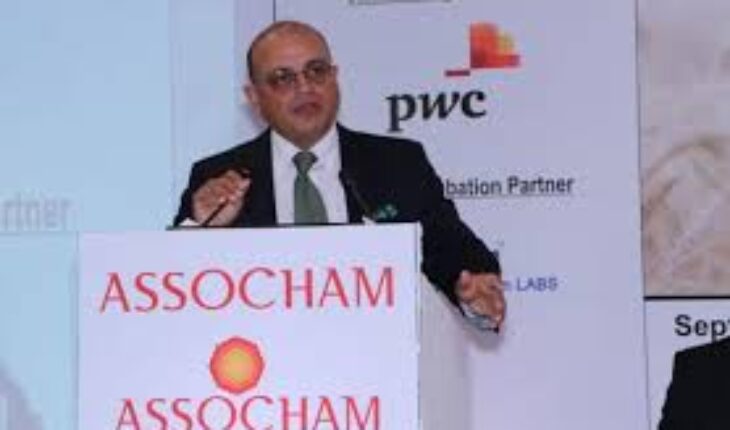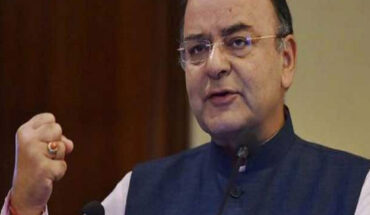-SATISH HANDA
Prime Minister’s Rs 20 lakh crore economic package for dealing with Covid-19 crisis along with focusing on several emergent measures would provide relief to stressed businesses while the medium to long term reforms would take India on path of a fast recovery, ASSOCHAM Secretary General Deepak Sood Said, the health and economic crisis of such a magnitude required confidence building measures which would have boosted the sentiment to face up to the challenge. “Prime Minister has provided a booster even as India Inc looks forward to significant relaxation of national lock down in force since March 25. Getting back to economic activity and learning to live with the health emergency should enable the Indian economy bounce back fast ,” he continued amendments in the IBC Act and the Companies Act , which would be effected through ordinance routes, as announced by the Finance Minister Mrs Nirmala Sitharaman reflects a sense of urgency. Sood added, exclusion of debts during Covid-19 period and the extension of abeyance up to one year in IBC [Insolvency and Bankruptcy Code] would provide relief to the companies which are over-leveraged. Likewise, wider de-criminalisation of provisions in the Companies Act would relieve India Inc of regulatory compliance.
Sood said, a huge increase of Rs 40,000 crore in the outlays for the MNREGA taking the total to Rs 1 lakh crore for the current fiscal should provide immediate relief to the rural labour and economy. ” It is becoming clearer that the bounce back is going to be led by the rural economy comprising agriculture and allied sectors such as milk, fisheries and the industries related with the sector”. Sood said the announcement on the Public Sector Policy, clearly spelling out the role of the government-owned companies within a broad frame work of strategic sectors would help both the private sector as also the state firms. He said, there is no conflict between the public and private sector. The Finance Minister, presenting her fifth and final tranche of the PM’s economic package has clearly stated that the presence of the public sector would be ensured in the strategic sectors while the number may be capped, from the point of view of operational efficiency and other requirements. It is a move aimed at getting the best out of our national assets, whether they are in public or private sector since both create jobs and national wealth.
ASSOCHAM Secretary General said, the focus on online education both at the school and university levels is the right and progressive approach. “Technology is the best tool available with us for an outreach to 130 crore Indians. The initiatives like allowing universities to offer online programmes under automatic route would go a long way in making our education more inclusive and contemporary. This is the way forward for linking with the best educational institutions in the world” he said, the enhanced priorities for the healthcare facilities, coupled with the testing labs at the district and block levels with increased public expenditure are the most needed national requirements. Sood said, the healthcare would get increased focus worldwide; we need to ramp our healthcare infrastructure in which both public as well as private sectors should join hands to cater to the health needs of our large population.
Linking MNREGA with industry
THE FINANCIAKL WORLD correspondent had a discussion with few industry entrepreneurs in Haryana state on the issue linking MNREGA with industry to solve labour employment, told that between 60 to 70 percent migrant labourers from U.P, Bihar and M.P has already left for their native states due to corona virus terror and most of them are not likely to return on work and settle in alternate jobs in their native states. According to Roshan Lal Gupta President Vyapar Mandal Haryana, linking MNREGA workers with industry near to their village will fill up the gap of shortage of workers being faced by industry in the state today, which will not only create sources of employment opportunities but also reduce financial burden on government to make available hundred days work for unemployed men or women usually working for road cleaning, digging ponds and other miscellaneous work in rural areas arranged by village Panchayat, whereas these workers are in a position to work for packaging, loading-unloading, office boy and other miscellaneous jobs in industry.
Information reveals that MNREGA budget is increasing every year recorded as Rs 325 crore in the year 2016-17, Rs 319 crore in the year 2017-18, increased to Rs 367 crore in the year 2018-19, further increased to Rs 367 crore in the year 2019-20 whereas amount worth Rs 787 lakh has already been spent by the government so far during current financial year. The Vice President of Haryana Sarpanch Association Ashok Malik admitted that there is no sufficient work with Panchayats to make available 100 days work for unemployed under this scheme. A recent study reveals there is requirement of nearly 70000 workers only at yarn and textile industry at Panipat.






